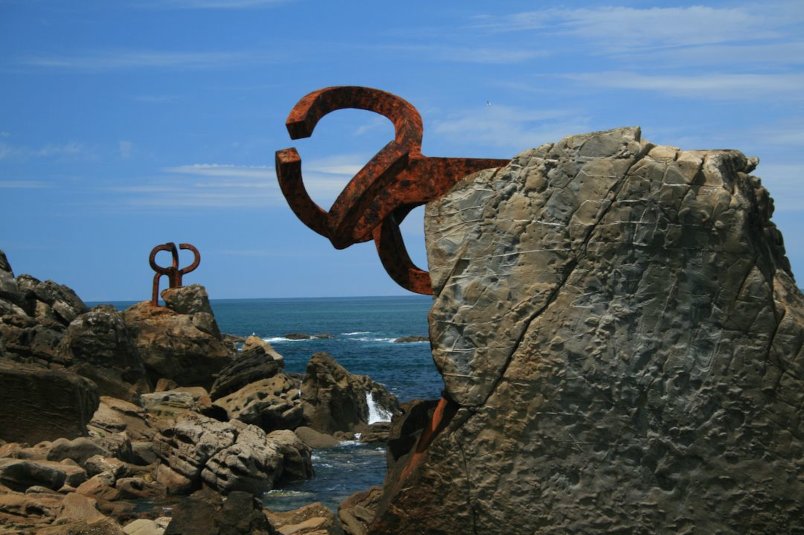Eduardo Chillida: Life and Works
- Culture
- 2024 May 05
Eduardo Chillida, universal artist
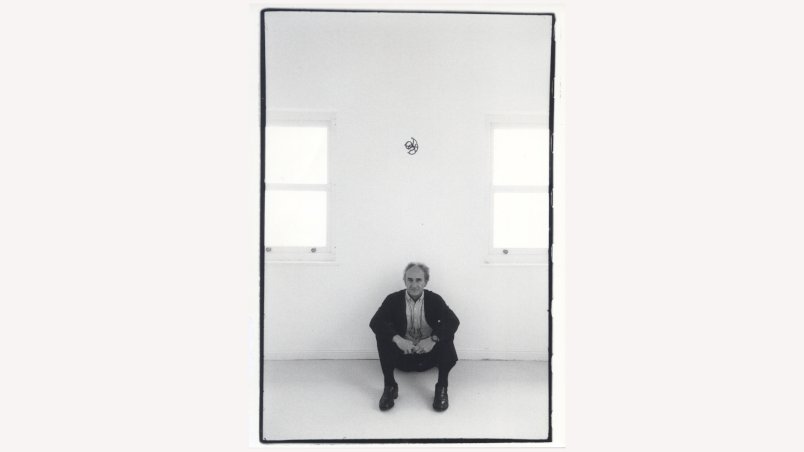 Eduardo Chillida next to Estudio for the Homage to Calder. Photo: Robert Royal
Eduardo Chillida next to Estudio for the Homage to Calder. Photo: Robert Royal
Eduardo Chillida Juantegui, one of the 20th century's most universal and influential Donostia artists, was born on 10 January 1924, and he and his two siblings grew up in a house in Plaza Zaragoza in the centre of Donostia/San Sebastián, a stone's throw from La Concha beach.
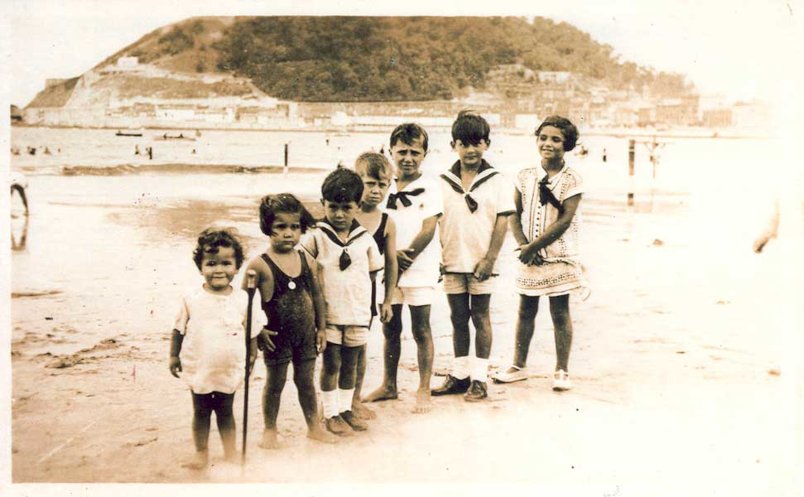 Eduardo Chillida (left) as a child with his cousins at La Concha, 1926. Photo Eduardo Chillida Archive
Eduardo Chillida (left) as a child with his cousins at La Concha, 1926. Photo Eduardo Chillida Archive
There can be no doubt that being born so close to our emblematic bay, breathing in air from the Cantabria Sea and feeling the power of the waves of the sea on its roughest days forged the personality of this universal artist.
They say that nature, freedom and spirituality intertwine and are reflected in his sculptures and artistic works. It comes as no surprise that the sea and Donostia's mountains and surroundings, the city's open cosmopolitan atmosphere, and a culture with such deep roots as our own inspired Eduardo Chillida in all his creations.
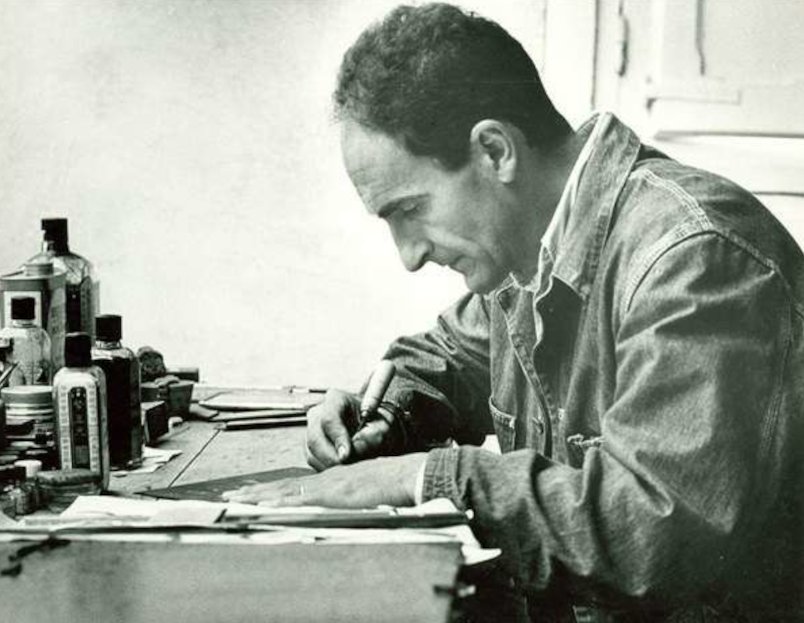 Eduardo Chillida in his studio in Villa Paz, 1965. Photo: Budd Studio
Eduardo Chillida in his studio in Villa Paz, 1965. Photo: Budd Studio
He said so himself, in fact: “I am like a tree, with its roots in one country and its branches open to the world”
Although he lived outside his own country (Madrid, Paris etc.) for a considerable part of his early years, exploring the world and acquiring fresh knowledge, he eventually decided to settle in the Basque Country, in Hernani, very close to Donostia, thereby consolidating his roots.
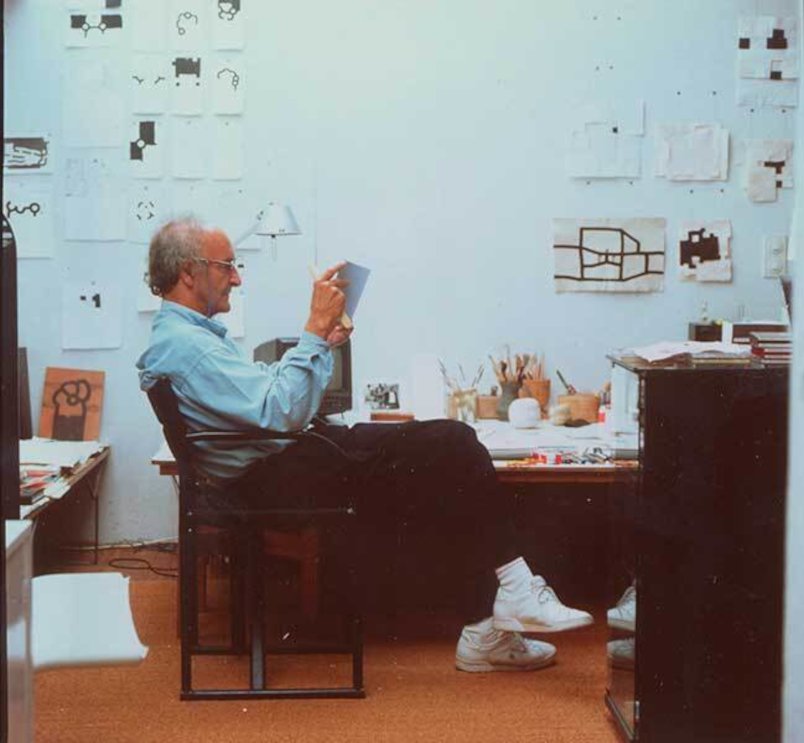 Eduardo Chillida in his studio in Ingeborg. 1990. Photo: Jesús Uriarte
Eduardo Chillida in his studio in Ingeborg. 1990. Photo: Jesús Uriarte
This was in 1950, when he returned to San Sebastián from Paris, married Pilar Belzunce, and fathered the first child, a daughter, in a family of 8 children. It was also at this time that he discovered iron as a working material for his creations. It is precisely this material, with which he constantly experimented, that is so characteristic of Basque rural tradition.
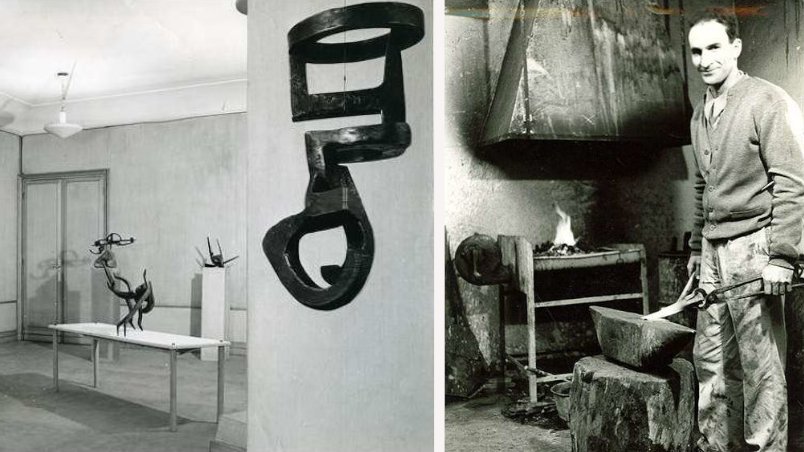 First exhibition at the Maeght Gallery, Paris (Photo: Galerie Maeght) and Chillida in his studio in Hernani (Photo: Gonzalo Chillida) - 1950s
First exhibition at the Maeght Gallery, Paris (Photo: Galerie Maeght) and Chillida in his studio in Hernani (Photo: Gonzalo Chillida) - 1950s
In fact, he employed a material similar to iron - steel - to fashion his best known emblematic work, the Wind Comb. Here he fused the sculpture with the environment he had known so well since childhood. This iconic creation, now part of the city's image and identity, is a source of pride for anyone from Donostia.
It is obvious that Donostia would not be as we know it today without the influence of Chillida, just as Chillida would not have become the man he was without the impact of his native city. It was in Donostia that he forged the identity, the character and the essence which he then transferred so masterfully to his works.
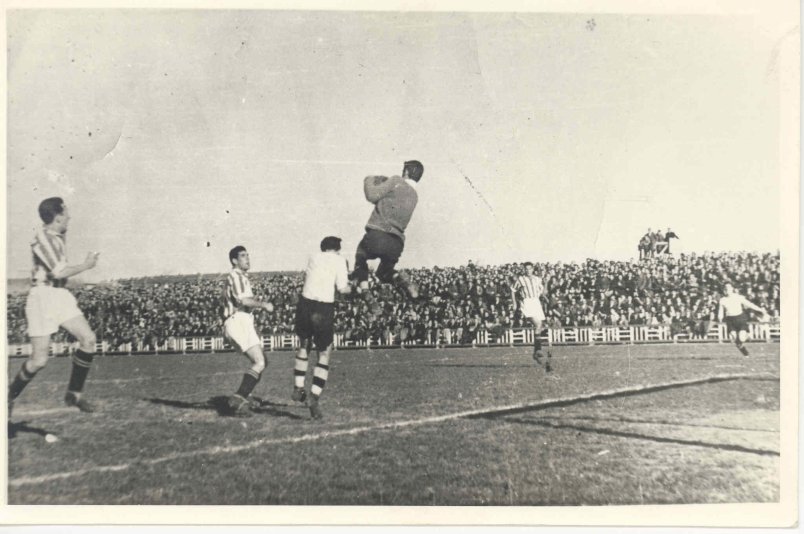 Eduardo Chillida at a soccer match with Real Sociedad at Campo de Atocha, 1942. Photo Eduardo Chillida Archive
Eduardo Chillida at a soccer match with Real Sociedad at Campo de Atocha, 1942. Photo Eduardo Chillida Archive
Did you know that at the age of 19 he was goalkeeper for Real Sociedad, and that the fans nicknamed him "the cat" for his jumping prowess? A knee injury put an end to his footballing, and it might have been this circumstance that made him the artist we know today.
The Wind Comb, a Donostia icon
We often find it on calendars, mugs, posters etc. Just like the railing along La Concha Bay, the Wind Comb has become part of Donostia's iconography, and no wonder. San Sebastián's Wind Comb is probably the Basque sculptor's most famous creation.
This huge piece is composed of three steel sculptures embedded in rocks facing the sea, at the end of Ondarreta beach. The grandiose steel claws blending in with the surroundings have graced such a special location since 1976, fending off the swell of the sea and the wind, combed through into the city.
A close examination of the artistic space formed by the Wind Comb and its emplacement, simulating an amphitheatre, is well worthwhile. The feeling of a convergence between land, wind and sea is difficult to explain. Especially on days when the sea is rough.
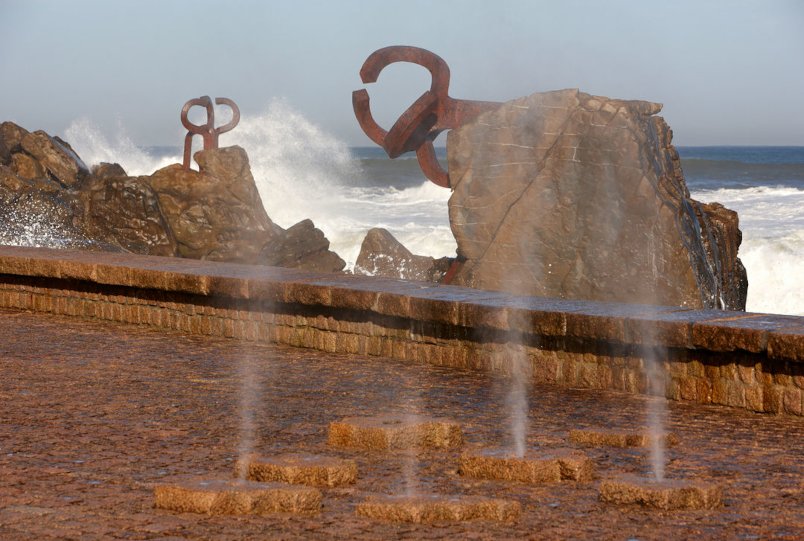
How many times down through the years would Eduardo Chillida have strolled around here, feeling the power of the sea?
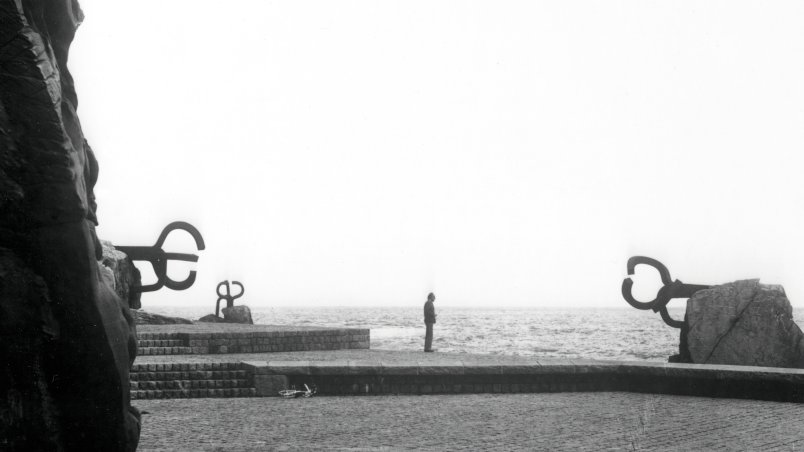 Eduardo Chillida next to Wind Comb XV in San Sebastian. Photo: Francesc Català-Roca
Eduardo Chillida next to Wind Comb XV in San Sebastian. Photo: Francesc Català-Roca
“This place is the beginning of everything. It is the real creator of the piece. All I did was discover it. Wind, sea and rock are all a decisive part of it. It is impossible to make something like this without taking the surroundings into consideration. It is a piece I have made, which I have not made”
- Eduardo Chillida –
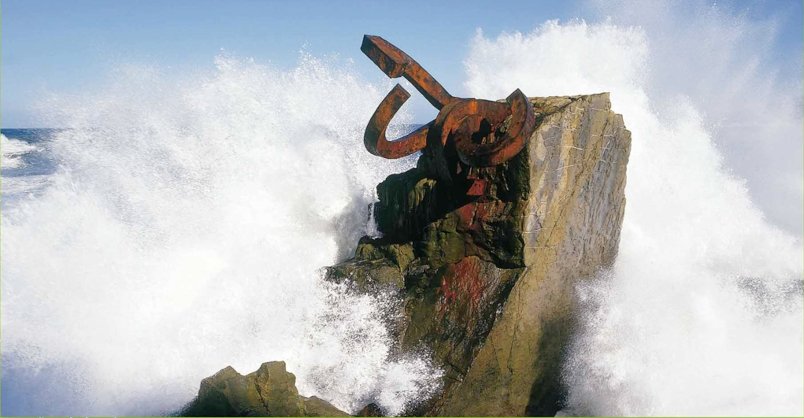 Wave on the Wind Comb
Wave on the Wind Comb
Other Chillida sculptures around the city
Some of Eduardo Chillida's work demonstrates his concern with public space. His on-street designs sought encounters with society, a connection with nature, and individual reflection.
Besides the Wind Comb, you can find other creations by the Donostia/San Sebastián artist in the city, slightly more off the beaten track.
Come along on our special stroll through this open-air museum. Absolute luxury!
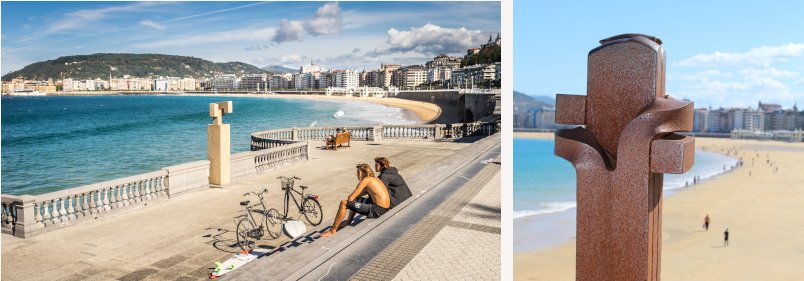 Fleming Monument (1990) and Besarkada Sculpture (1992)
Fleming Monument (1990) and Besarkada Sculpture (1992)
Celebration of his centenary
Eduardo Chillida would have been 100 years old on 10 January 2024. This is why an international commemoration is being organised in 2024 by the Eduardo Chillida - Pilar Belzunce Foundation - "Eduardo Chillida 100 years, meeting place". It will be a unique occasion to showcase not only his work, but also his values, sensitivity and contributions to the history of contemporary art.
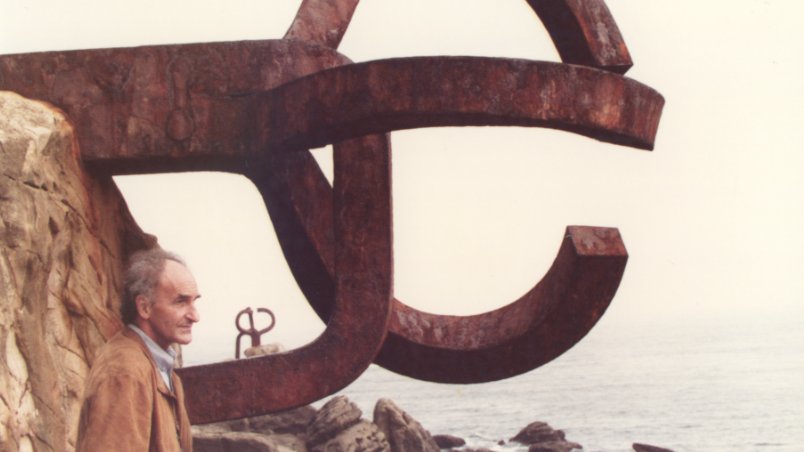 Eduardo Chillida next to Wind Comb XV in San Sebastian. Photo: Eduardo Chillida Archive
Eduardo Chillida next to Wind Comb XV in San Sebastian. Photo: Eduardo Chillida Archive
Proposals and activities will be added at various locations around the world throughout 2024. You can go to this link for the full programme and the latest information.
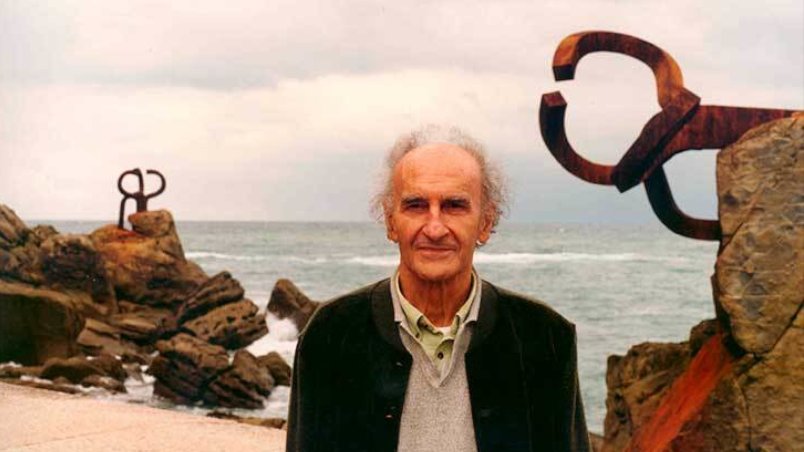 Eduardo Chillida next to Wind Comb XV in San Sebastian. Photo: Eduardo Chillida Archive
Eduardo Chillida next to Wind Comb XV in San Sebastian. Photo: Eduardo Chillida Archive
Eduardo Chillida left us on 19 August 2002 in San Sebastian, the city that saw his birth. Although he is no longer, his artistic legacy, his ideas and his unique vision of the world will go on forever.

